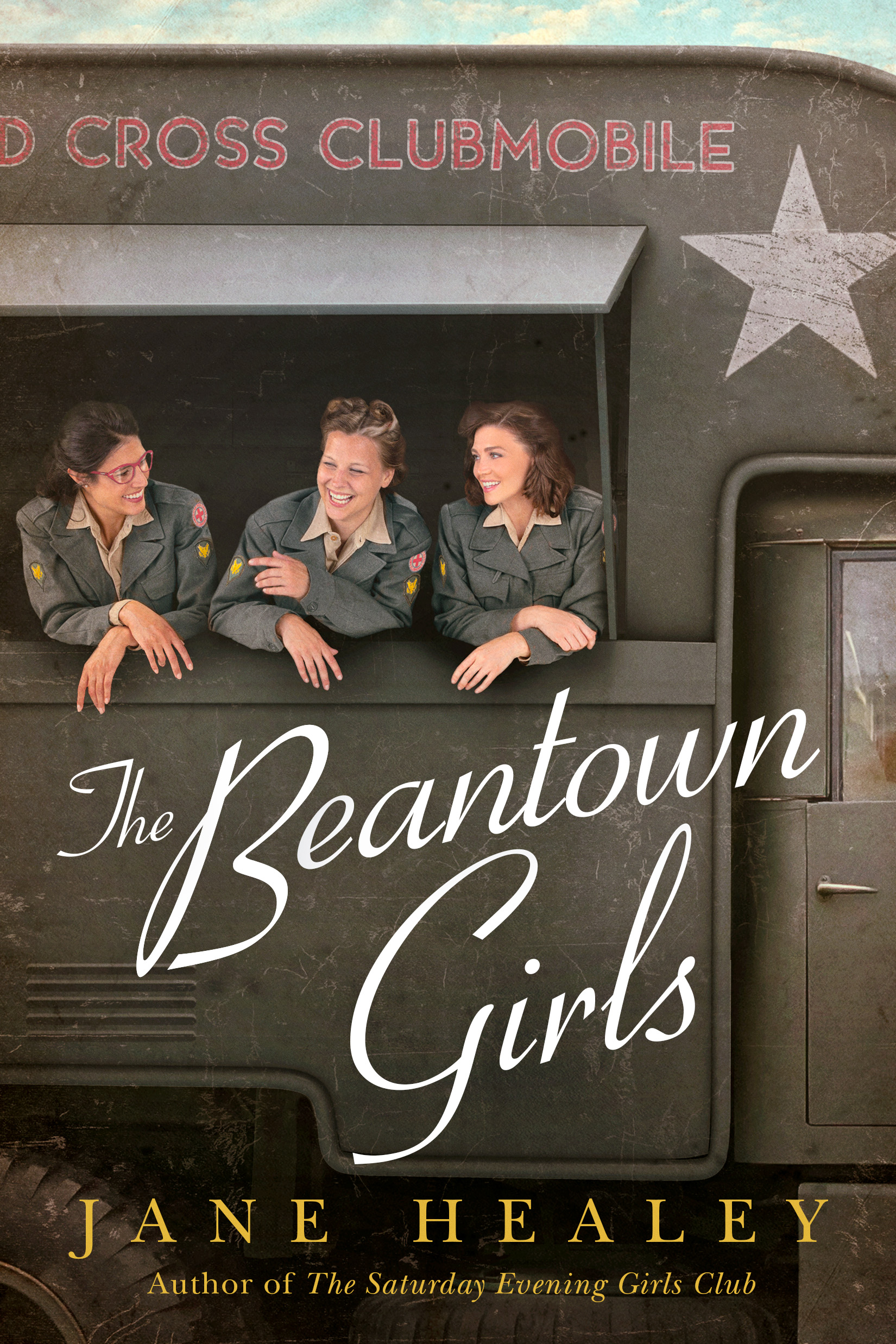Jane Healey on Research for The Beantown Girls and Women’s Stories in History

Photo: Sharona Jacobs
With her second work of historical fiction, Jane Healey knew that she wanted to highlight a story of lesser-known women. So when she came across the story of the Red Cross Clubmobile girls, American women who volunteered to bring a piece of home to soldiers in World War II, she was instantly drawn to them. The Red Cross Clubmobile girls became the subject of her new novel, The Beantown Girls, out last February from Lake Union.
“As I started to research their history, I became fascinated by these brave, compassionate women and what they had experienced during the war,” said Healey. “I think we’re in this wonderful time now where many stories about women in American history that were once overlooked are being celebrated and shared. I think there are still many more stories out there about women that are just waiting to be found.” She was also drawn to the setting of World War II, because her grandfather had been a firefighter in the Navy during the war.
Cover Design: Kirk DouPonce
The story follows Fiona, who joins the Red Cross with hopes of finding her missing-in-action fiancé, and her two best friends as they face the brutal realities of war and attempt to offer comfort to the men fighting it. As Red Cross Clubmobile girls, they brought a piece of home to soldiers in the field by way of serving “coffee, donuts, and a smile,” sometimes close to the front lines.
Although the characters are fictional, much of the book is based on true stories. “I definitely do the bulk of the research first, because that helps me shape the narrative,” said Healey. Taking place over a year’s time, from July 1944 to June 1945, the story focuses on the latter part of the war in England, France, Germany, and Belgium. She used primary sources, such as the diaries and letters of women who served in the Red Cross, to determine her timeline and settings.
To maintain clarity, Healey highlighted dates and places at the beginning of each chapter. “This is an adventure story—three friends on a journey. So when there was a leap in time and place, I felt it was important to include that information at the start of the chapter,” she said.
After doing a bulk of the research, Healey was able to begin outlining and writing. Along the way, she continued to research topics and make choices about what to fictionalize. “Any fictionalized aspects for me are really filling in the blanks in the narrative that I couldn’t discover through research,” she said. When crafting fictional details to fit the narrative and history, she asked herself, “Maybe this didn’t happen, but could it have happened within the context of time and place? Is it plausible, does it work historically?”
This focus on attention to detail and historical accuracy also affected how she wrote her main characters—Fiona, Dottie, and Viv. “I thought a great deal about who these characters were before writing about them, and then really kept in mind the cultural and historical context in terms of their behavior, decisions, and of course things like the way they talk and dress.”
Healey’s attention up-front to detail added a level of smoothness to the editorial process. “The book didn’t require any big shifts in structure or narrative. My editors were amazing—they helped me sharpen certain events and characters, clarify questions I had about what was working and what wasn’t. They made the story better in every way.”
The Beantown Girls was published on February 5, 2019. Just ten days after the book’s release, it appeared on the Amazon bestseller list as the #1 bestseller on Kindle in the U.S. It is also on the Washington Post Best Seller list.
Find Jane Healey online at janehealey.com and on Twitter @HealeyJane.
Megan DeMint is a writer and editor with a love for nonfiction: memoirs, collections of essays, books by journalists, and whatever else she can get her hands on. She writes articles about authors and their writing processes at Spine Magazine and works as a Communication Specialist at Cornell University. Even more of her work can be found at www.megandemint.com.

